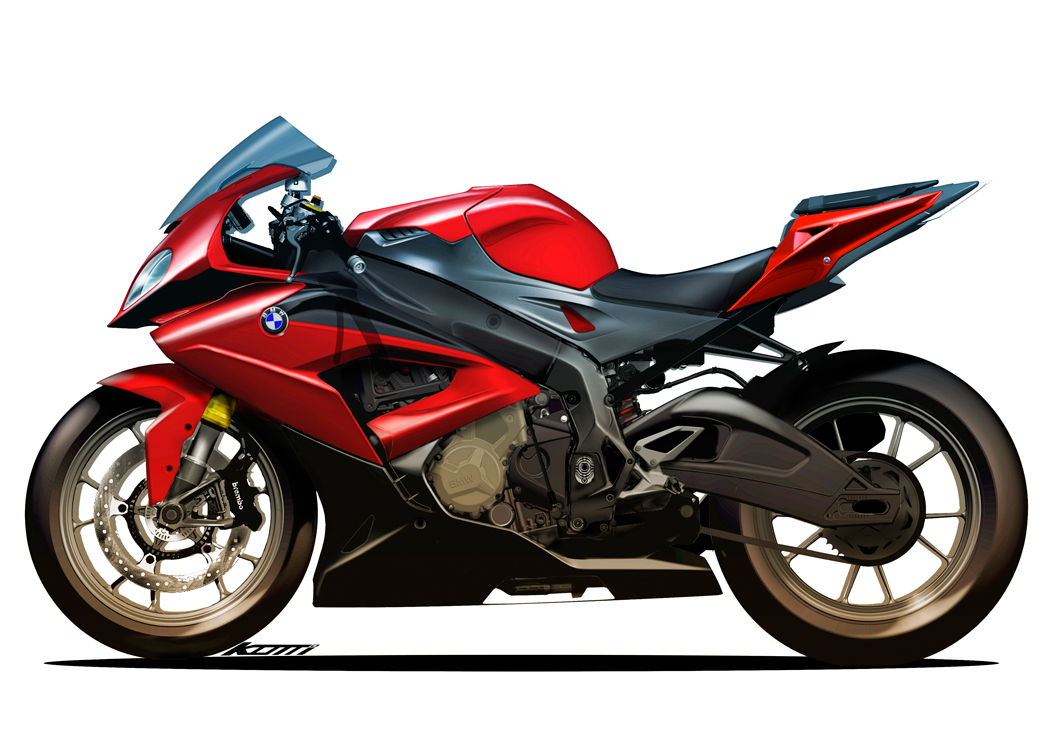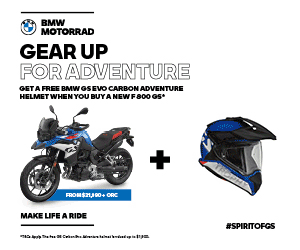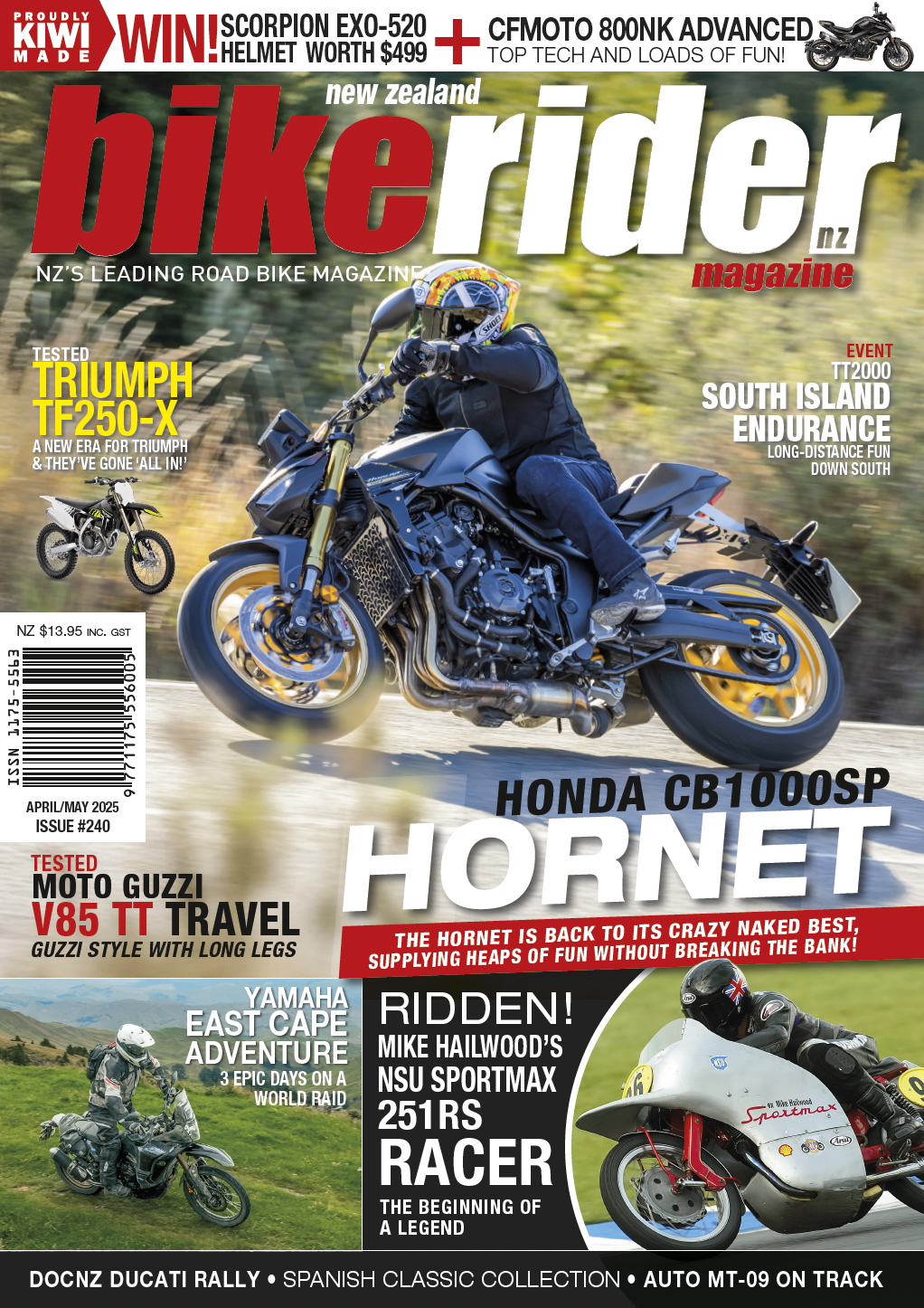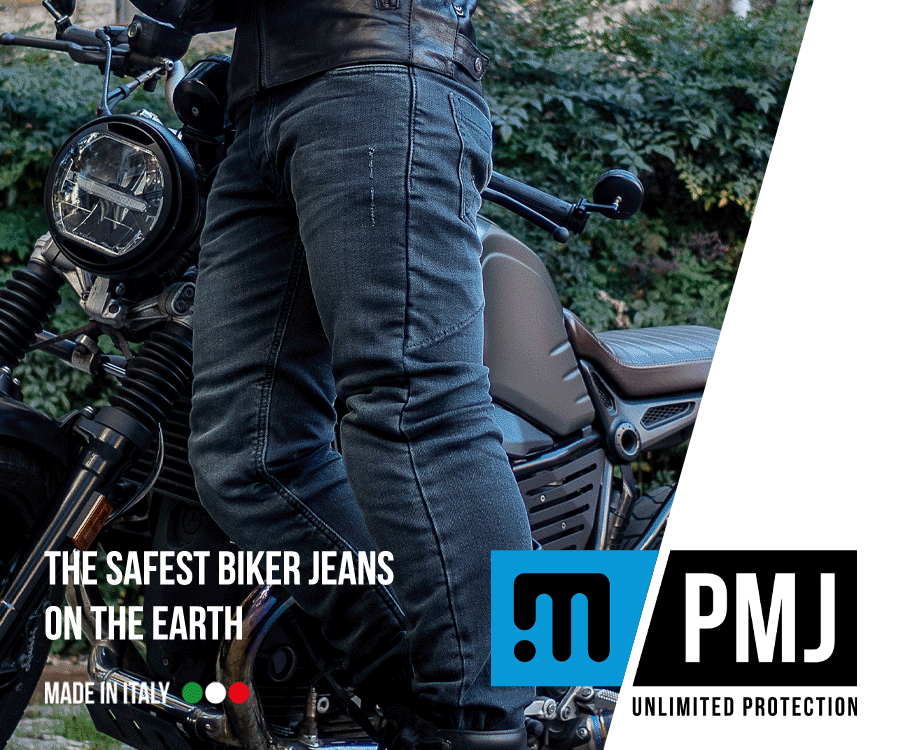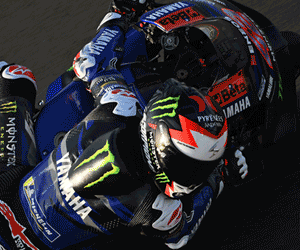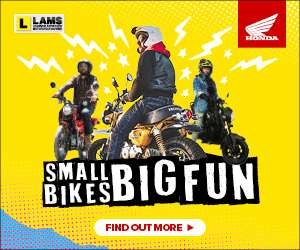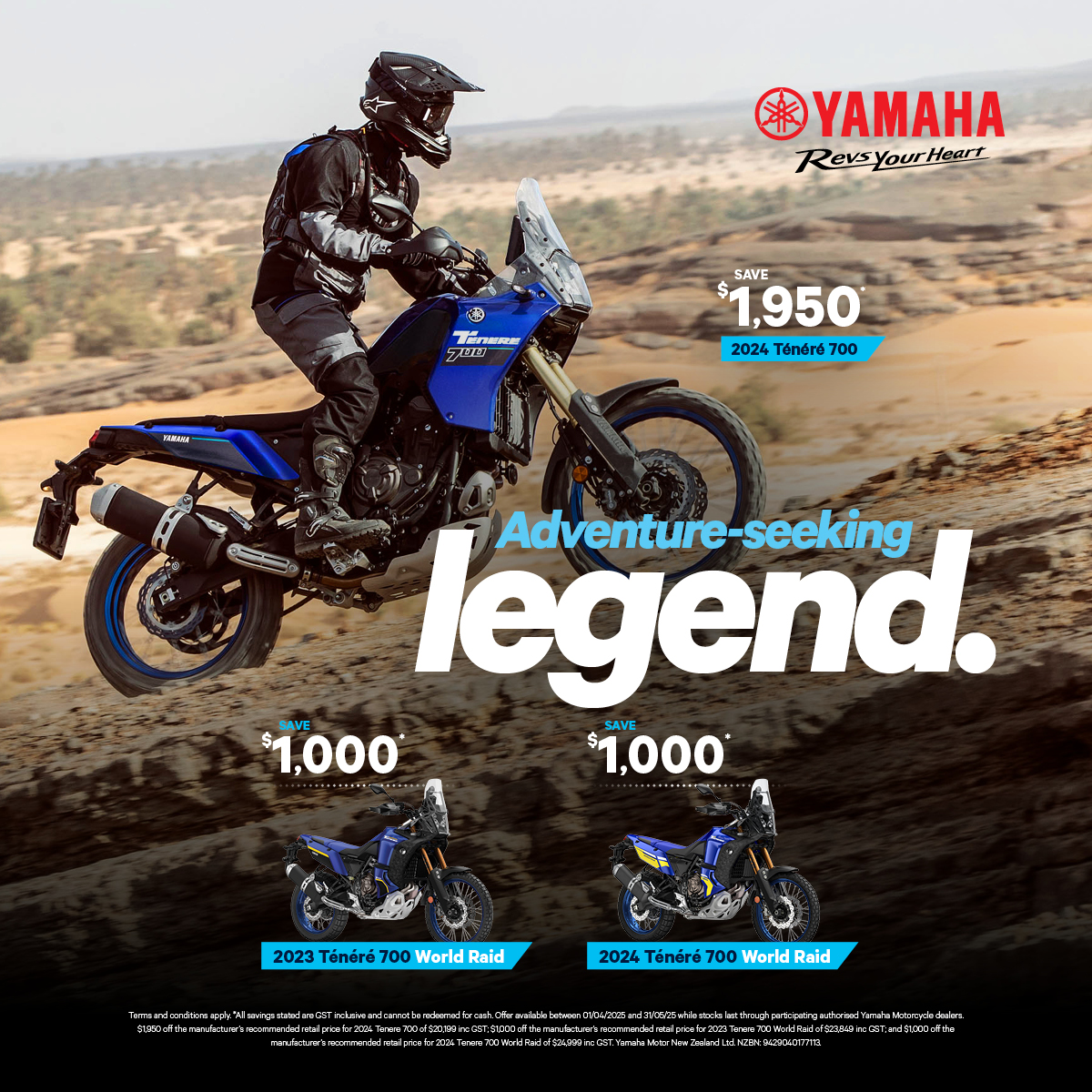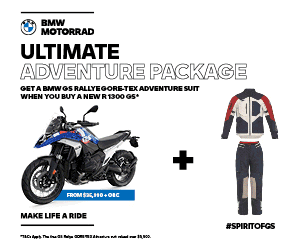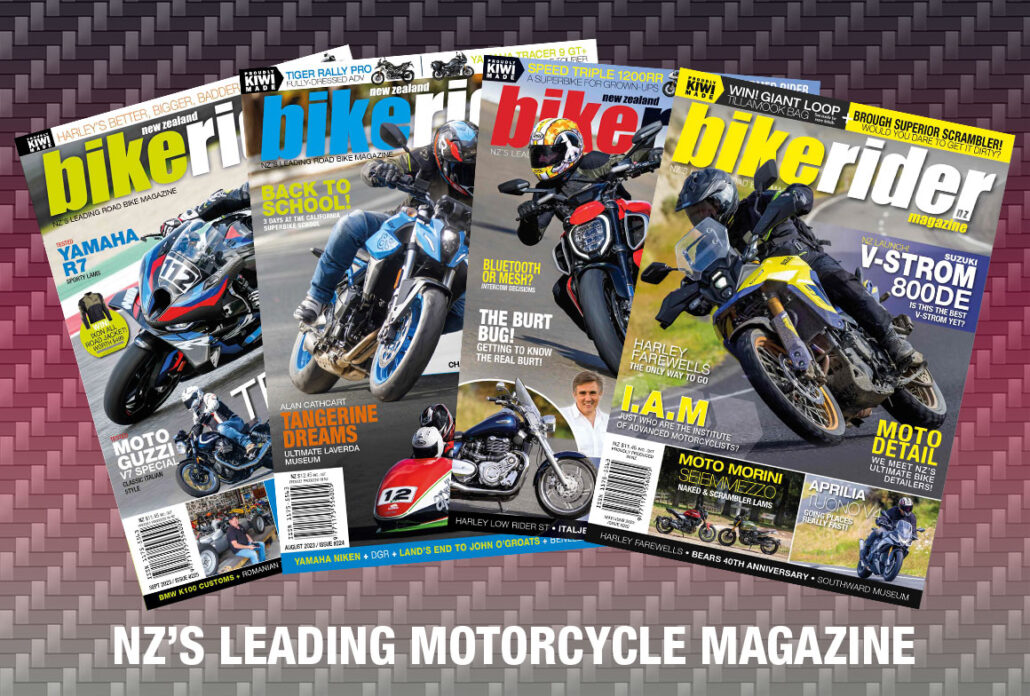Come On Then…
Words: Roland Brown | Photos: Arnold Debus, Jorge Kunstle and Alberto Martinez
When it first hit the showrooms, the BMW S1000RR was a blatant challenge to everyone else. By leap-frogging the HP4, the ‘standard’ 2015 version is the biggest step since that very first ride on BMW’s flagship superbike.
World Launch
The speed of the S1000RR has been hugely impressive from the very first lap, but as I climb off BMW’s sharpened weapon in the Monteblanco pit lane for the last time my even stronger impression is of how incredibly easy the day has been. We’ve just finished five 20-minute sessions of the circuit near Seville, the last two on slick tyres that allowed this outrageously powerful and hard-cornering bike to deliver even more of its performance.
I’ve worn out plenty of knee-slider — the BMW’s gyroscope-linked data-logger said it was leaned over at 58degrees through one banked right-hander in the last session — and I can’t imagine that I’ve ever ridden a faster standard production motorcycle. Yet despite that and the warm Spanish weather the day’s riding has been almost curiously effortless.
Even when I squeezed the front brake lever at the end of the pit straight to slow the ABS-equipped, slick-shod RR so hard it almost sucked the wind from my lungs, the bike stayed remarkably stable and controllable. When I wound open the throttle to send it screaming out of one of the second-gear turns with an awesome force, the traction-control light flickered briefly to confirm it was helping me, and the suspension worked its semi-active magic to keep the bike stable and driving hard.
That last, lonely but very enjoyable session in the Spanish sunshine, when I caught and passed just two riders and was overtaken once myself, was very different to the final session of the original S1000RR’s launch, at Portimao in November 2009, when several dozen yellowy-green BMWs shared the crowded track. But the scene back in the pit garage afterwards, with a few beer bottles being opened to celebrate the end of a memorable day, was similar.
RIP HP4
And the conclusion, at least for now, has to be the same: the S1000RR has raised the super-sports bar. This BMW could never make the impact of the original 193bhp four that astonished the motorcycle world five years ago. But the challengers that will be unveiled by Aprilia, Ducati and Yamaha in the near future will have to be very special to take the top spot from an S1000RR that has been significantly improved even from the high level of its exotic HP4 flagship variant.
This second-generation S1000RR effectively consigns the HP4 to history by adopting its key assets of semi-active suspension and on-the-move traction control adjustment, along with a host of other updates to both engine and chassis. In its standard form the new RR comes with conventional suspension and three riding modes. All the launch bikes were fitted with the under-seat Pro dongle, which adds Slick mode plus a User mode that allows the rider to create a customised combination of throttle response, suspension and traction control characteristics.
Even the basic RR is comprehensively updated. Changes to its 999cc engine include a new cylinder head with new intake camshaft and lighter inlet valves. A bigger airbox, shorter intake trumpets and a redesigned, 3kg lighter exhaust also contributes to a 6bhp increase that brings peak output to 199bhp at 13,500rpm. Chassis changes include a new, lighter frame with revised stiffness and sharper steering geometry. At 204kg with a full tank the RR is also 4kg lighter than its predecessor.
Styling is familiar but subtly different, notably with the reversed headlight arrangement that puts the pointed dip-beam lens on the right. The blue-and-white bikes were lined up in a damp Monteblanco pit lane following an overnight downpour. At least that gave an opportunity to try the Rain mode, which smoothens power delivery and now reduces the maximum by just 12bhp to a hardly feeble 187bhp.
In a way that first, relatively gentle session emphasised the RR’s all-round brilliance even more than the faster ones that followed. Not long ago 187bhp was the output of a factory Superbike, never mind a softened streetbike. (Neil Hodgson’s 2003 WSBK winning Ducati 999 produced 189bhp.) But the way that the S1000RR’s gyroscope-enabled traction control intervened smoothly to prevent too much of that power from reaching the rear tyre made relearning the damp track stress-free. With the excellent ABS also helping, I enjoyed the session and learned plenty about the grip level, with minimal risk.
By the next session the surface had dried, so I bypassed the road-biased Sport mode and chose Race, which gives the full 199bhp and identical throttle response but with firmer, more track-suited suspension settings. The BMW immediately felt tauter, steering with a light and very neutral feel, and staying impressively stable both entering and exiting bends as its suspension automatically adjusted to suit parameters including acceleration, lean angle, speed, throttle and brake position.
And boy, was the RR rapid in a straight line. As well as that 6bhp increase at the top end, the 16-valve motor gains with a slight increase in torque at lower revs, from 5000rpm to 9500rpm (though there’s a small reduction below 4500rpm). Throttle response from the revised ride-by-wire injection system is superbly crisp, and the action very light although unlike one rider, who thought it a bit too light, I didn’t find that a problem.
The traction control setting is fine-tuned, too, giving a more refined response plus, in Slick and User modes, allowing easy tuning through 15 settings by pressing an Aprilia RSV4-style thumb button on the left bar. This is a useful feature, although it held me back briefly on my first session after lunch, when the bikes had been fitted with lightweight forged wheels wearing Pirelli slicks.
After seeing the yellow warning light flashing while I accelerated out of the final right-hander I jabbed the button several times on the straight, only to notice the light flashing even more… because I’d mistakenly increased the level of TC rather than turning it down. Even on its highest setting the system cuts in smoothly and restores full power equally seamlessly as the bike comes upright, so you don’t always know it’s working. But it is remarkably efficient.
The other electronic functions ranged widely in their usefulness at Monteblanco, though all will have their moments. I didn’t have any need of the new pit-lane limiter, which is activated by holding the starter button; nor the launch control, which would be handy at the start of a race, or to get perfect drive from an intersection maybe… The cruise control and heated grips, both of which are accessories, will be of much more value on the road.
The accessory Gear Shift Assist Pro that all the bikes were fitted with was a real asset. This works not only on up-shifts but also on changing down, when it adds a perfectly timed blip of the throttle to ease the change. Before riding the BMW I wouldn’t have though this particularly useful, but in combination with the slipper clutch I found it really helpful in freeing my mind to focus on the corner entry. One rider reported a slightly slow and imprecise change but my bike worked flawlessly all day. (The gearlever can also be very quickly reversed to give a race-shift pattern.)
Stopping power was also outstanding, helped by the way the DDC system firmed up the front end when required; and doubtless also by the 8mm longer wheelbase’s contribution to stability. The ABS system worked remarkably well even when the Brembos were burying the front slick in the Spanish track when slowing from 250km/h for the tight first turn. But this bike’s Continental anti-lock system doesn’t incorporate the cornering ABS of the HP4’s Bosch ABS, one respect in which even this accessorised S1000RR doesn’t quite match its more exotic forebear.
That advantage is a rare one because perhaps the most impressive aspect of the S1000RR is the way in which this updated model surpasses not only its RR predecessor but the HP4 flagship too (at least when fitted with its main options). It’s easy to believe project leader Rudi Schneider’s comment that, with development rider and former grand prix ace Jürgen Fuchs aboard, it’s a second quicker around a typical racetrack.
Its price won’t approach HP4 levels although the S1000RR will presumably be more expensive than its predecessor when equipped to the level of the launch bikes. The optional features are grouped into two packages, Race and Dynamic. As with previous BMWs it’s likely that some markets will offer a high-spec Sport model incorporating most extras at reduced cost. Either way, this cleverly and comprehensively updated S1000RR has set a searing pace in what is shaping up to be an epic battle for 2015 super-sports domination.
All the bodywork is new, with the reversed headlights the most obvious difference and the tail section sharper and more upswept. Handlebars are 5mm wider; the screen is reshaped for improved aerodynamics and sits above a new instrument panel whose long list of digital information includes actual and maximum lean angle, plus current and maximum deceleration rates, maximum traction control torque reduction for each lap, and number of gearchanges for each lap.
Updates to the 999cc engine include a new cylinder head with new intake cam and lighter inlet valves. A bigger airbox, shorter intake trumpets and a redesigned exhaust also contribute to the increase. Along with the 6bhp increase in maximum power to 199bhp at 13,500rpm, torque is considerably increased through the midrange although the peak of 113N.m at 10,500rpm is up by just one Newton metre.
Chassis changes include a new, lighter frame with revised stiffness and revised rake (one degree steeper at 23.5 degrees), trail (reduced by 1.5mm to 96.5mm), wheelbase (8mm longer, at 1425mm) and swing-arm pivot location (3mm lower). Suspension spring and damping rates are modified, and there’s the factory-fit option of a revised version of the HP4’s semi-active Dynamic Damping Control, which puts the 46mm forks’ electronic parts in the left leg and springs in the right.
The main options and accessories are offered in two groups. The Race package comprises Pro riding mode (which includes launch control and pit-lane limiter, as well as Slick and User modes), DTC traction control, and cruise control. The Dynamic package incorporates DDC semi-active suspension, LED indicators, HP Gear Shift Assist Pro, and heated grips. BMW has not yet confirmed whether it will offer a higher spec S1000RR combining upgrades from both groups.
In addition to the RR options, buyers can select from a vast range of HP high-performance accessories, including more than a dozen carbon-fibre parts, plus titanium exhaust, and racing wiring harness and seat. The launch bikes were fitted with the HP Race data logger, which revealed a staggering amount of information, not only detailing lean angles, throttle and gear position all around the track but also providing a GPS trace of my line. This revealed that I was losing time by taking too wide a line exiting one turn. There really is no place to hide!

Rudi Schneider, S1000RR Project Leader
“The lap time was the most important thing in the development. Our target was to be faster against the clock. We didn’t want to lose the quality on the road; we wanted to keep the RR’s level as a road bike as it was. If we could make it a bit better that was okay, but the target was always to give it more performance.
“I think it’s a good bike on both road and track. I do a lot of kilometres on the road; every day from March until November. Also I’m often on the racetrack, and I always use a bike with semi-active suspension. It’s easier because I don’t have to adjust it a lot. I just switch the mode and that’s it.
“If I had to pick one thing that improves the bike most, maybe it’s the ridability. I was certain that the way we could improve performance was to make the bike comfortable for the rider; to provide a bike that is easy to ride. Because when you have a bike that’s easy to ride you get faster.
“The chassis changes are very important. The electronic suspicion is brand-new. It’s not just imported from the HP4, it’s also improved, in both the hardware and the software. We learned in our chassis department and also on the racetracks. We worked closely with Wilbers team [in German IDM Superbike] and the Italian team [Sylvain Barrier’s EVO class entry in WSBK], who have both been using the semi-active system all through the season.
“We have direct comparisons with this bike and the previous model, although it depends on the rider and on the track. The HP4 was the reference because it was our highest level. At our endurance test in Cartagena, Jürgen Fuchs was more than one second faster with the new RR than with the HP4. If you put the options into the RR it’s now at a higher level than the HP4.”
Specs
Engine type: Liquid-cooled transverse four
Valve arrangement: DOHC, 16 valves
Displacement: 999cc
Bore x stroke: 80 x 49.7mm
Compression ratio: 13:1
Carburation: Programmable fuel-injection with ASC traction control (DTC traction control optional)
Maximum power: 199bhp @ 13,500rpm
Maximum torque: 113Nm @ 10,500rpm
Clutch: Wet multiplate slipper
Transmission: 6-speed, optional quick-shift
Front suspension: 46mm USD telescopic, 120mm spring travel, adjustment of preload, compression and rebound damping (test bike: adjustment of preload, electronic adjustment of compression and rebound damping)
Rear suspension: Single shock, 120mm wheel travel, adjustment of preload, compression and rebound damping (test bike: adjustment of preload, electronic adjustment of compression and rebound damping)
Front brake: Brembo radial Monobloc four-piston calipers, Twin 320mm discs, linked system with ABS
Rear brake: Single-piston caliper, 220mm disc, linked system with ABS
Front wheel: 3.50 x 17in; cast aluminium
Rear wheel: 6.00 x 17in; cast aluminium
Front tyre: 120/70 x 17in Pirelli Diablo Supercorsa
Rear tyre: 190/55 x 17in Pirelli Diablo Supercorsa
Rake/trail: 23.5 degrees/96.5mm
DIMENSIONS
Wheelbase: 1425mm
Seat height: 815mm
Fuel capacity: 17.5 litres
Weight: 204kg (with full tank)
Colours: Blue/white; red; black

